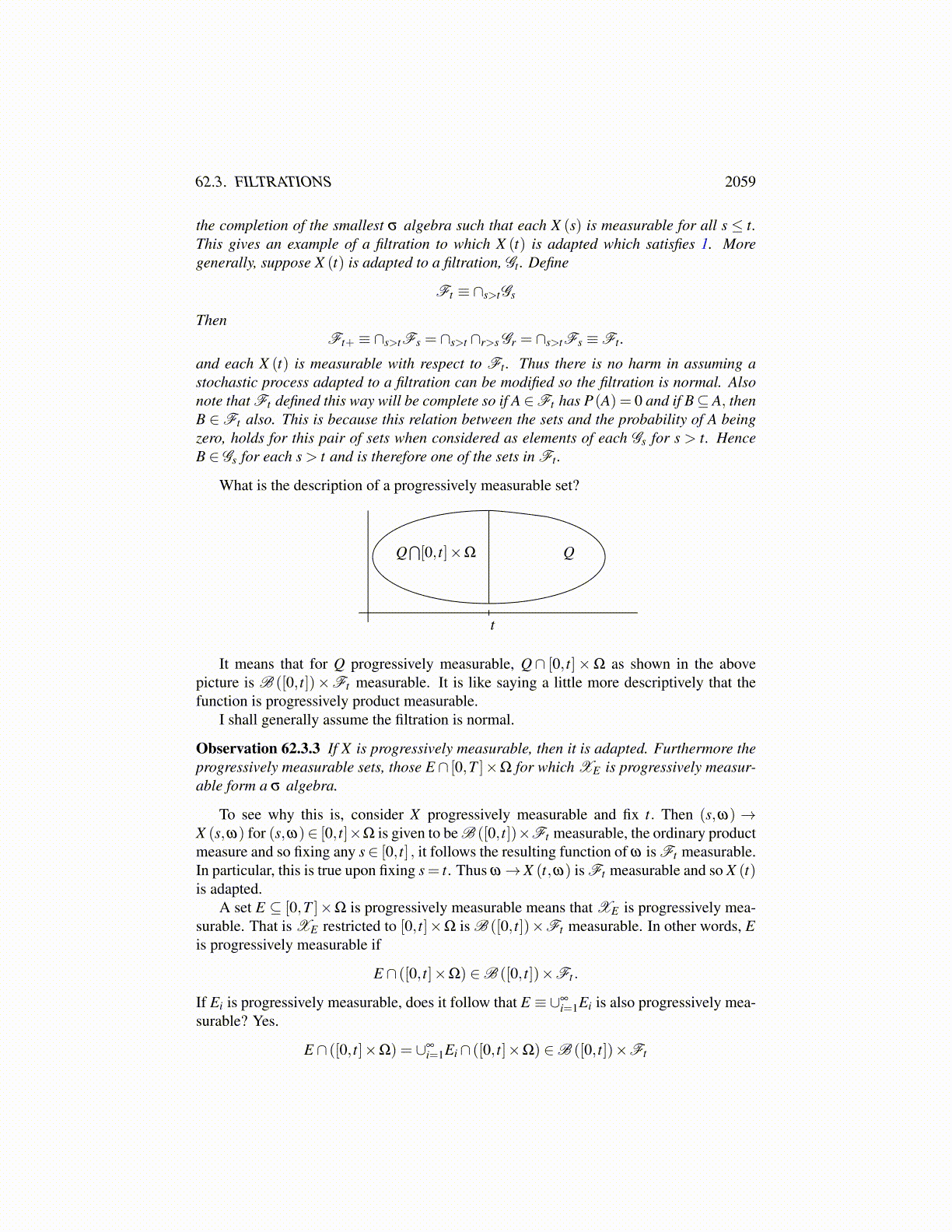
62.2. KOLMOGOROV ČENTSOV CONTINUITY THEOREM 2059
≤C2nγ (∥Y −Xn∥∞+Mn+1)
Denote by Pn the ordered pairs (s, t) satisfying the above condition that
0≤ s < t ≤ T, |t− s| ∈[2−(n+1)T,2−nT
],
sup(s,t)∈Pn
∥Y (t)−Y (s)∥(t− s)γ ≤C2nγ (∥Y −Xn∥∞
+Mn+1)
Thus for a.e. ω, and for all n,(sup
(s,t)∈Pn
∥Y (t)−Y (s)∥(t− s)γ
)α
≤C∞
∑k=0
2kαγ(∥Y −Xk∥α
∞+Mα
k+1)
Note that n is arbitrary. Hence
sup0≤s<t≤T
(∥Y (t)−Y (s)∥
(t− s)γ
)α
≤
supn
sup(s,t)∈Pn
(∥Y (t)−Y (s)∥
(t− s)γ
)α
≤ supn
(sup
(s,t)∈Pn
∥Y (t)−Y (s)∥(t− s)γ
)α
≤∞
∑k=0
C2kαγ(∥Y −Xk∥α
∞+Mα
k+1)
By continuity of Y, the result on the left is unchanged if the ordered pairs are restricted tolie in Q∩ [0,T ]×Q∩ [0,T ] , a countable set. Thus the left side is measurable. It followsfrom 62.2.11 and 62.2.13 which say
∥Y −Xk∥Lα (Ω;C([0,T ],E)) ≤C(
2(β/α))−k
, E (Mαk )≤C2−kβ
that
E(
sup0≤s<t≤T
(∥Y (t)−Y (s)∥
(t− s)γ
)α)≤
∞
∑k=0
C2kαγ 2−βk ≡C < ∞
because αγ−β < 0. By continuity of Y, there are no measurability concerns in taking theabove expectation. Note that this implies, since α ≥ 1,
E(
sup0≤s<t≤T
∥Y (t)−Y (s)∥(t− s)γ
)≤(
E(
sup0≤s<t≤T
(∥Y (t)−Y (s)∥
(t− s)γ
)α))1/α
≤C1/α ≡C
Now
P(
sup0≤s<t≤T
(∥Y (t)−Y (s)∥
(t− s)γ
)α
> 2αk)≤ 1
2αk C
and so there exists a set of measure zero N such that for ω /∈ N,
sup0≤s<t≤T
(∥Y (t)−Y (s)∥
(t− s)γ
)α
≤ 2αk